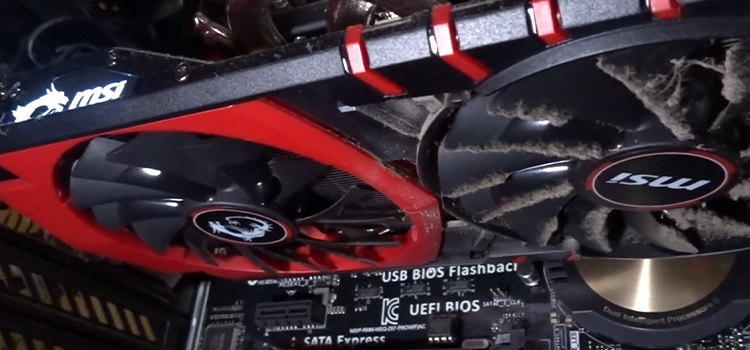What’s a Good Idle Temp for GPU? Everything to Know
You don’t get the same thermal capacity with different brands and models of GPU. So, it is hard to determine the exact safe temperature of an idle GPU. But most manufacturers claim the temperature remains in the 30 to 50° Celsius range. They also inform that anything beyond the 60 degrees mark can drastically decrease the lifespan of the GPU.
The room temperature and weather sometimes determine the temperature range. But be careful as the temperature should not exceed 60 degrees Celsius, no matter what.

What’s a Good Idle Temp for Graphics Processing Unit
Generally, the GPU temperature remains around 30 to 50 degrees Celsius when your computer is not performing GPU-intensive tasks. But the weather and room temperature affect the GPU’s temperature. For example, when the environment is warm, it naturally increases the temperature of the GPU.
But, if the GPU’s temperature increases above 60 degrees Celsius, some issues might have occurred. So, you will have to find out what generated this increment in heat.
However, different brands and models offer distinctive thermal capacities of graphic cards. Besides, whether your GPU is old or new also affects the temperature of the GPU.

The Normal GPU Temperature While Gaming
In the past, games tended to rely on the CPU. But now, the design of the PC components has changed. And the games take advantage of the GPU resources to run high frame rates.
Generally, the additional stress that gaming puts on the PC components generates heat.
However, while playing, many factors come into play to increase temperature. For example, the game’s graphic requirements, such as resolution and frame rate, affect the temperature range.
The temperature should remain 60 to 65 degrees Celsius while playing low-resolution games. On the contrary, playing a demanding game with high resolution and fast fps rates for a couple of hours will typically increase the GPU temp to the 65 to 75 degrees Celsius range.
In addition, the quality of the GPU’s cooling system and case, the number and strength of the fans, and other factors are also responsible for affecting the temperature range.
But the temperature should not increase beyond 85 degrees. Though the manufacturer claims that their product can withstand 90 to 115 degrees Celsius, it will melt the internal components and shorten the lifespan of the GPU.

How to Measure the GPU Temperature – Ways to Follow
You cannot get the accurate temperature by touching or listening to fan noises.
Two ways help you to identify a safe temperature reading.
1. Built-In Windows 10 Feature
Microsoft optimized an option in Task Manager that helps you find out the GPU temperature through Windows settings in the latest update of Windows 10.
The 20H1 update in 2020 provided us with an advanced Task Manager with the ability to measure the exact GPU temperature.
How to Get the GPU Temperature
- First, go to the Windows search bar and type ‘Task Manager’.
- Once you find the app, open it, and head to the Performance tab.
- After that, scroll down to find the GPU temperature on the right side of the screen.
2. Third-Party Apps
If you are not able to monitor the GPU temperature through Windows settings, you can use safe monitoring utilities made for such tasks.
Though these apps were not provided with the graphics card in the past, GPU are pre-installed on the newly-purchased one.
The sensors placed on the GPU itself provide the information to these apps. They not only provide you with accurate data and more details but also inform fan speed, voltage, and more, without taking up much disk space.

Frequently Asked Question
Does high GPU temperature affect lifespan?
A significant number of people consider that keeping the GPU cool is necessary for only maintaining the performance. But it is also significant for your device’s overall health and lifespan. Overheating leads to physically stretching and warping materials that cause its life to end much sooner than expected.
Why is my Idle GPU Temperature so High?
When idling, the GPU runs hot basically for two reasons. The first culprit is a faulty GPU fan. And the other reason is a misconfigured fan curve that does not let the fan move when it should. Nevertheless, some other facts are responsible for getting high temperatures.
Final Words
The optimal temperature range is somewhere around 30 to 50 degrees Celsius. Yet, modern graphic cards claim that they withstand 90 to 115 degrees Celsius. High temperature is detrimental to your GPU. So, try to keep the GPU idle temperature as low as possible for the higher longevity of your graphic card.
Subscribe to our newsletter
& plug into
the world of technology





